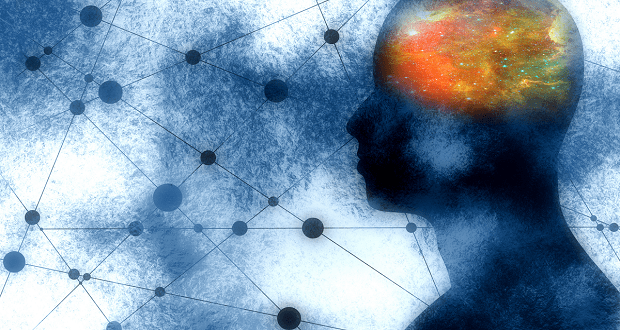
Everything changed 30,000 feet up.
I’ve always been an avid traveler. As a military “brat,” I spent much of my early childhood and young adult years on airplanes, floating between different cities, states, and countries. Being in the air felt like freedom – I was always amazed by how powerful it felt to take off, wispy contrails streaming behind in the distance as houses, cars, and people became toy-like and diminutive. To me, there was no greater feeling than being in flight.
So, the morning I boarded a plane to New York City to see friends was no different – I woke up early, grabbed my luggage, and made my way to the airport without thinking much of it. After rounds of making my way through TSA and waiting at my gate, I finally found my way onto the small jet, and pulled out my novel to settle into a few chapters before we took off. A few minutes after boarding the plane, however, I realized that something was very different.
As the flight took off that morning, I immediately felt flushed, and everything around me seemed much louder than normal. My heart fluttered as I squeezed my eyes shut, salty tears beginning to form on my cheeks. I gasped, suddenly unable to breathe, and as I tried to will my eyes open to look out the window, I realized I wanted nothing more than to be off of the plane. The one-and-a-half-hour flight that I had taken countless times before seemed to last an eternity.
Later that week, as I recounted the experience to my doctor, she informed me that I had experienced a panic attack – likely triggered by anxiety and stress. “It’s actually common around your age,” she mentioned, scribbling some additional notes on her clipboard as her eyes narrowed. “Have you talked to anyone else about this?”
I was dumbfounded. Even after spending time during my undergraduate years studying psychology, and spending the years thereafter as an HR professional immersed in reasonable accommodations processes, wellness programs, and diversity and inclusion, mental health and wellness wasn’t something that I spoke a lot about with my family, friends, or colleagues. Anxiety and depression were important, but they were things that happened to “other people.” No one that I knew growing up went to therapy or spoke about seeing a psychologist or psychiatrist. Mental health was a luxury I took for granted. It wasn’t until that moment – 30,000 feet in the air – that I experienced what my privilege had allowed me to overlook as a very important aspect of my identity, and the identities of those around me.
Over the last several decades, the topic of mental health in the workplace has gained increasing awareness. And, employers have paid attention for good reason: approximately 1 in 5 adults in the U.S. experience some form of mental illness each year. Depression continues to be the leading cause of disability worldwide, and anxiety disorders (including generalized anxiety, panic, obsessive-compulsive, and post-traumatic stress disorders) have been recognized as the most common mental illnesses in the U.S., affecting 40 million adults annually.
Mental health affects everyone – individuals, caregivers, and organizations that want to ensure that their employees are healthy, safe, and productive. However, because mental health is not as visible as other diversity dimensions, and because mental illnesses often give way to “invisible” or non-apparent disabilities, mental health is often misunderstood, stigmatized, and overlooked.
Mental illnesses often give way to “invisible” or non-apparent disabilities, mental health is often misunderstood, stigmatized, and overlooked. Click To TweetIncluding mental health in the conversation when we talk about diversity and inclusion is important to help educate and destigmatize, creating the opportunity for genuine empathy and open dialogue. When we shift the focus of mental health away from “taboo” we can begin to raise awareness of mental wellness, challenge assumptions about mental illness, and what it “looks like,” and better understand how to remove barriers to inclusion.
Breaking the Stigma
The first step in breaking the stigma seems simple: talk about it. But, it can be hard to talk about something that you can’t see. Mental health can be particularly difficult to discuss in communities of color, within the LGBTQIA+ population, and among women, who face additional cultural stigmas, biases, and, in many cases, lack of access to important mental health resources and care. Underrepresented groups are less likely to receive needed mental health services; in 2015 48% of Whites received mental health services, compared with 31% of Blacks and Hispanics, and 22% of Asians. If change is going to occur, more conversations both within and outside of these communities will need to happen.
Talking about mental health, mental illness, or other disability in the workplace can be uncomfortable. To reduce the stigma, our unconscious and conscious biases need to be acknowledged and interrogated. Traditionally, organizations have focused on the “what” when it comes to disability: creating an accommodations process, training managers on how to support reasonable accommodations, educating employees on the paperwork or forms they may need to complete. There has been much less focus on the “how”: creating an inclusive environment where individuals feel that they can share their mental health concerns without fear of repercussion or discrimination.
Although having the appropriate infrastructures and processes in place is important, we must look beyond the legal and compliance perspective of simply doing what we “must” do to increase awareness and provide resources for employees who need additional support. It is also important to acknowledge mental health in contexts outside of disability, while recognizing the importance of health care and empowering individuals with the tools and resources they need to be healthy. After all, disability is one of the only dimensions of diversity in which individuals may find themselves represented at any time throughout the course of their lives.
Although having the appropriate infrastructures & processes in place is important, we must look beyond the legal & compliance perspective of simply doing what we “must” do Click To TweetNot only is increasing openness and transparency around mental health the “right” thing to do legally and morally – it is also right for business. It is estimated that mental illness and substance abuse cost employers over $225 billion annually, due to costs related to absenteeism and the less recognized phenomenon of presenteeism – employees continuing to show up to the office and work while not feeling well. With employee mental health expenses continuing to rise, organizations simply cannot afford to ignore or underestimate the impact of mental health – and neither can diversity and inclusion efforts.
Employee Resource Groups Leading the Way
Many organizations have created Employee Assistance Programs (EAPs), work-based intervention programs that help support employees with a myriad of personal concerns, including substance abuse, mental wellness, family issues, and even financial or legal challenges. However, these resources are typically promoted in a reactive manner – to seek help after a challenge has already arisen.
Employee Resource Groups (ERGs) may offer another resource both for employees to connect and learn, and employers seeking clarity on how to better understand and support the needs of all of their workforce. These voluntary, employee-led groups play a vital role in educating and connecting the workforce, while bringing awareness to important issues that often don’t get discussed in the workplace. They also can help destigmatize mental health by sharing stories that facilitate empathy and create opportunities for connection.
Some organizations, such as Accenture and Johnson & Johnson, have even begun to launch ERGs and ally networks specifically dedicated to mental health, recognizing that the needs of employees and caregivers for those with mental illnesses are often unique. Mental health-focused ERGs can provide a safe place for those looking for resources, or opportunities to build community and comradery. Finally, these groups can also serve as platforms for senior leaders to talk about their own challenges with mental health and share their commitments as allies, which may help employees feel more empowered in their own teams and workplaces.
Starting the Conversation
When I had my first panic attack, I felt ashamed, afraid, and nervous about sharing what had happened. What would my friends think? And my family? What if it happened again, while I was in public? Or at work? But as I started talking about it, I saw the power in starting the conversation – in being vulnerable, and being open to challenging my previous assumptions about mental health. And, with my openness, came openness from others – I realized that I wasn’t alone. I wasn’t the first person who had coped with anxiety, or worked with a therapist, or supported a friend or family member through crisis.
It is my hope that diversity and inclusion efforts will continue to focus more on mental health, disparities in care and resources in diverse communities, and creating more allies and advocates for mental health awareness. By starting the conversation, we lessen the taboo and pave the way to real change.
It is my hope that diversity and inclusion efforts will continue to focus more on mental health, disparities in care and resources in diverse communities, and creating more allies and advocates for mental health awareness. Click To TweetAs for me? I’ll be booking another flight soon.


















